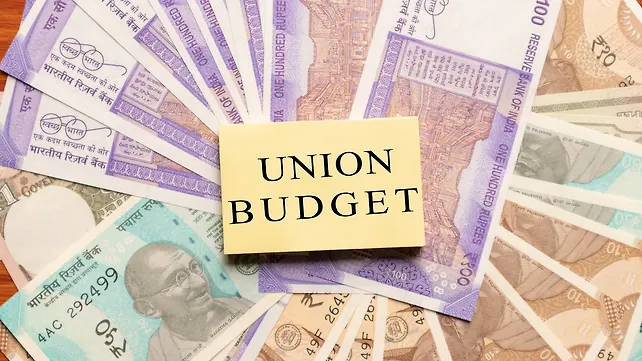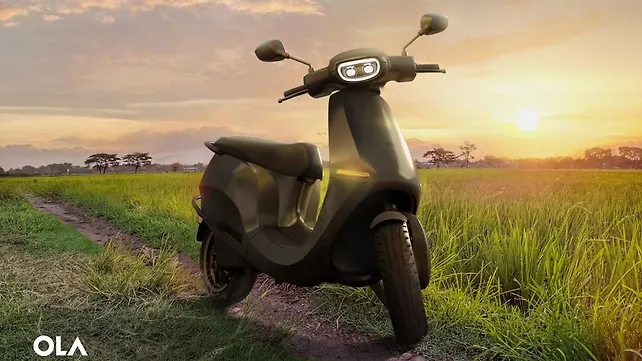
The article is co-authored by Ahaana Mahanti
The Union Budget for FY23 reinforced India’s ambitious commitments declared at the COP26 for a green future. The FAME (Faster Adoption and Manufacturing of Hybrid and Electric Vehicles) scheme witnessed a three-fold increase in allocation – a whopping 263.5% increase at INR 2,908 crore.
While the Indian EV market has gained substantial momentum in the light of increasing global commitments to reduce fossil-fuel dependence, its market penetration was abysmally low during FY21, accounting for only 1.3% of total vehicle sales, much of which can also be attributed to the pandemic induced slump. Moreover, halfway into the FAME-II scheme, only about 3% of the funds allocated for demand incentives were utilised, and only 6% of the targeted one million two-wheeler (2W) EV units were sold under the scheme [1].
However, recovery estimates are promising. A 2021 report by RBSA Advisors on the EV Industry in India stated that the market is expected to grow at a compounded annual growth rate (CAGR) of 90% between 2021 and 2030, and is estimated to be worth more than $ 150 billion by 2030.
Market share for the 2W and four-wheeler (4W) segment is likely to touch 10% by 2025 and 25-30% by 2030. The three-wheeler (3W) segment is likely to dominate the EV market gaining about 70% of the share by 2030, followed by buses – primarily run by State Road Transport Undertakings (STUs) – with an estimated share of about 35% by 2030.
B2B and B2C models by demand aggregators such as Ola and Uber, and the bulk procurement model of the Energy Efficiency Services Limited (EESL) under the national e-mobility programme have been driving EV adoption in India.
Escalating Adoption
The market for EVs is largely dependent on policy instruments such as tax incentives, subsidies, purchase incentives, green public procurement programmes, and tightening regulations around greenhouse gas (GHG) emissions, among others, that can significantly influence the vehicle supply mix, invite sizeable investments in R&D for technology evolution and strengthening EV infrastructure, and as a result, achieve economies of scale and bolster competition.
For EVs to enable the low carbon transition, efforts must be directed towards integrating EVs in power systems, support manufacturing of sustainable batteries, decarbonising electricity generation, and accelerating the deployment of recharging stations. A cumulative investment to the tune of $ 200 billion will be necessary for vehicle production and charging infrastructure in India.

To meet the requirements of the projected two million EVs on the roads by 2026, India will need about 400,000 charging stations. The National Highway Authority of India (NHAI) plans on adding one charging station for every 40-60 km of national highways with a target to cover over 40,000 km by 2023. Petroleum corporations like IOCL, BPCL, and HPCL are also betting big on EV charging infrastructure across the country along with several private players.
The budget session declared that a new battery swapping policy will be brought out over the next two months, initially as a boost for sectors like last-mile delivery and ridesharing dominated by electric scooters, motorcycles, and auto-rickshaws. EV owners are likely to get incentives of up to 20% of the total subscription cost or lease cost of the battery in addition to the purchase incentives they already receive for buying clean vehicles.
Interoperability standards will be formulated for EVs to ensure seamless functioning of EV charging systems infrastructure. Another salient feature of the budget was the inclusion of energy storage in the Harmonised List of Infrastructure, which will enable domestic EV battery makers to access quick and cheaper finance and consequently increase their share in the total EV battery sales to about 35-40% by 2030, up from less than 10% today.
New Business Models
The EV market is witnessing several new age business models and financing mechanisms. EESL’s leasing model involves bulk procurement of best quality EVs from manufacturers and leasing them to fleet operators, which can significantly bring down the high initial upfront costs by manufacturers and enable aggregators to have an asset-light business with low investments.
Bangalore-based EV start-up Bounce is tapping gas stations and mom-and-pop stores to build a network of battery swapping stations for its Infinity E1 electric scooter. It also provides options to customers to buy the model without a battery, which could substantially reduce running costs by about 40% as compared to conventional scooters.

Ola Electric, valued at $ 5 billion, has a similar business model, where its electric 2Ws are supplied without a battery and the battery ecosystem is deployed as a service largely managed by battery specialists.
Quicklyz, Mahindra Finance’s digital vehicle leasing and subscription business vertical offers a range of electric 4Ws including Mahindra Electric, Tata Motors, Audi, Mercedes-Benz, Jaguar and MG Motors along with 3W load vehicles from Mahindra and Piaggio used in last-mile delivery by e-commerce fleet operators. Customers do not have to make any down payments on Quicklyz and can lease 4Ws by paying monthly subscription charges with the flexibility to upgrade their vehicles every two to three years to access newer EV launches.
While entrepreneurs have been tinkering and driving India’s EV revolution, entrepreneurial organisations are entering the fray through strategic investments and acquisitions. Hero MotoCorp, holding close to 40% in Ather Energy, and Reliance Industries’ recent acquisition of UK-based Faradion for £ 100 million are recent examples of this trend.
In Conclusion
This year’s green union budget has only catalysed this revolution throwing open thousands of opportunities for both start-ups and large organisations to identify and build across the entire value chain. Leveraging emerging technologies, developing operational excellence, building consumer safety, designing innovative consumer-oriented business models and an integrated multimodal e-mobility system backed by policy support will be key to success in the EV space.
With the Budget signalling the government’s intentions for the EV space, entrepreneurs will do well to plug into the electric revolution. The EV ecosystem will continue to be an important contributor to India’s COP26 commitments. There is space for thousands of entrepreneurs, MSMEs, and large organisations to play a role in the evolving EV ecosystem. If you are not exploring how the EV revolution will impact you and your business, you will be left behind!
References:
[1] India’s EV Policy Landscape; Akshima T Ghate, Principal, RMI India; Presentation At Transportation Research And Intelligence Network (TRAIN) Strategic Discussion; December 3, 2020.
About the Authors: Raj Krishnan Shankar is an Associate Professor at Great Lakes Institute of Management in Chennai. Ahaana Mahanti is a Research Associate at the Indian School of Business in Hyderabad.